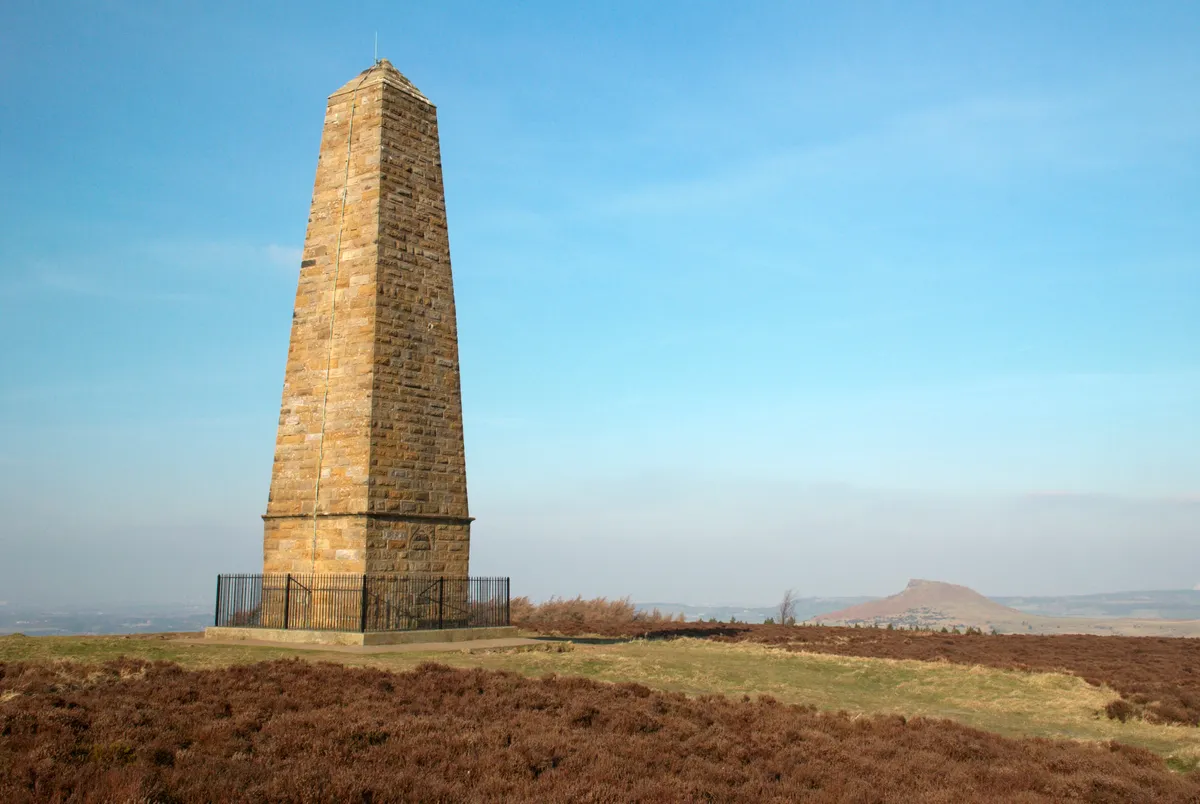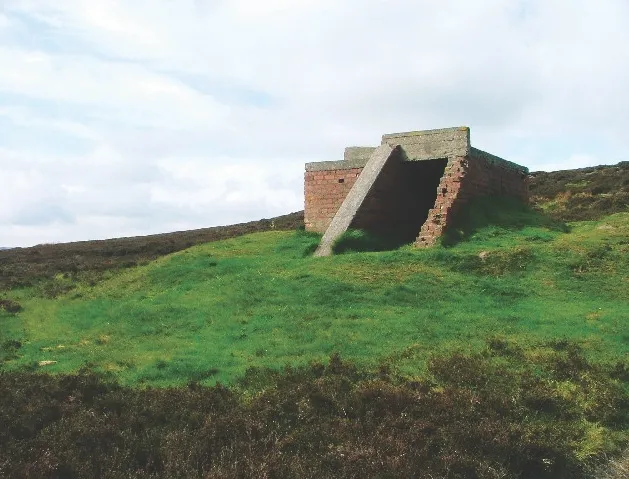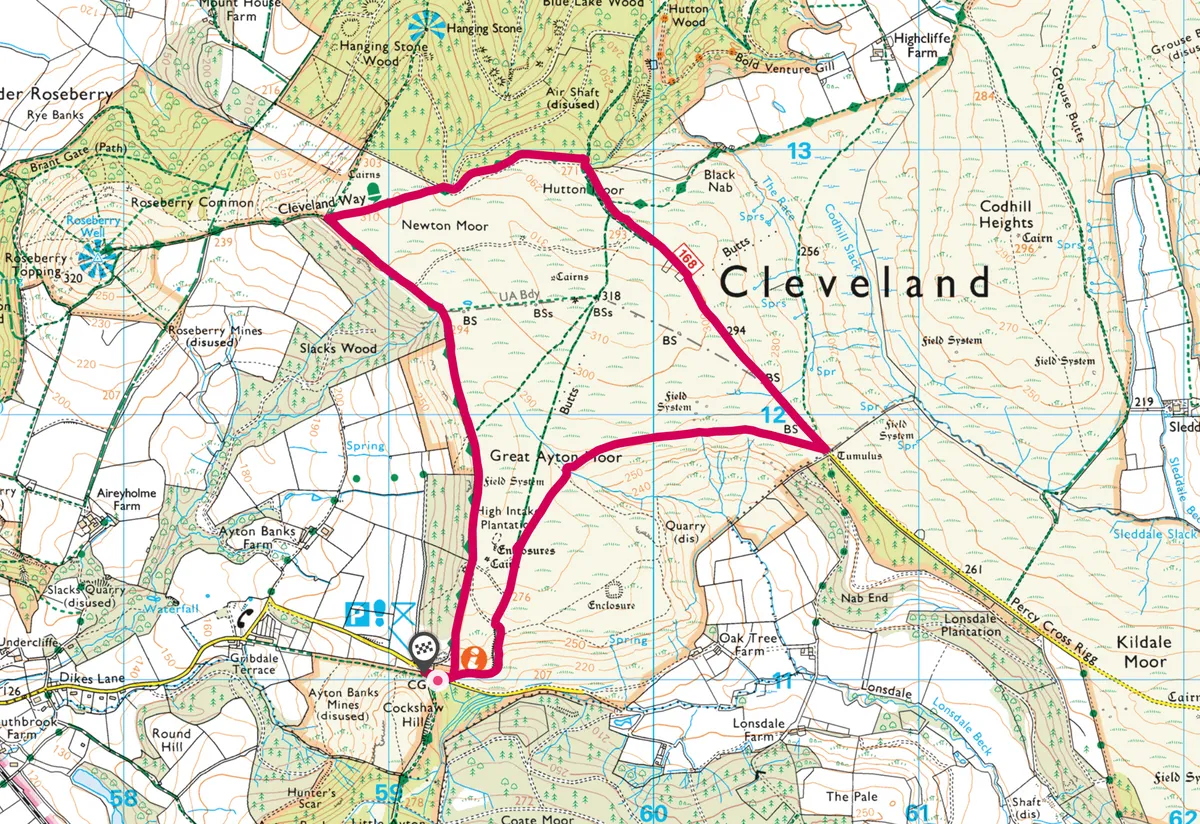As the night-time Luftwaffe raiders crossed the Yorkshire Coast they had their target in sight – the iron and steelworks of Middlesbrough, vital to the British war effort.
On 25 May 1940 Middlesbrough was the first important British town to be bombed during World War II, but it wasn’t until November that year, when Coventry was blitzed, that serious attempts were made to protect vulnerable cities, not just by installing anti-aircraft defences, but also by attempting to fool the enemy.
The North York Moors seems an unlikely location for psychological warfare, but this walk on the national park’s northern edge takes you to see the remains of one of the war’s most covert defense strategies.
This short historic walk takes you across Great Ayton Moor in the North York Moors National Park to an isolated World War II building, which masqueraded as an entire city in order to save Middlesbrough from burning.
1. Lonely obelisk
From the car park by woodland just north of the 15m high Captain Cook monument, cross the road and take the right hand track, past the ‘SSSI Moorland’ sign.

2. Up to the moors
Go uphill, bearing right at a fork and continue for more than a mile. Turn left uphill before a gate.
3. Starfish site
At the top of the slope is a brick structure with a thick concrete roof. This is the control bunker for the Gisborough Moor Starfish site. A peaceful place today, with fine views of the North Sea, in the early 1940s it played a major part in protecting Middlesbrough.

A series of iron tanks, raised on gantries, would be set out. These tanks held inflammable liquid that could be ignited and quenched on demand. The fires were lit as soon as German bombers began an attack. When they were quenched, the resulting steam looked like the smoke of a burning city, and enemy pilots would drop their bombs harmlessly on the moors instead. Such decoys were officially known as ‘SF’ or ‘Special Fire’ locations, but were generally called ‘Starfish’ sites. The Gisborough Starfish was one of five protecting Middlesbrough. Leaving the bunker, continue on the track, descending to a gate. Go through and turn left; as you go uphill, Middlesbrough comes into view northwards.
4. Up to the top
Turn left through a gate, following Cleveland Way signs. Roseberry Topping is seen straight ahead.

5. Homewards
Before a gate, turn left, parallel to a wall, and follow the track that eventually reaches steps down to the car park.
Map
Click on the map below for an interactive version of the route.


